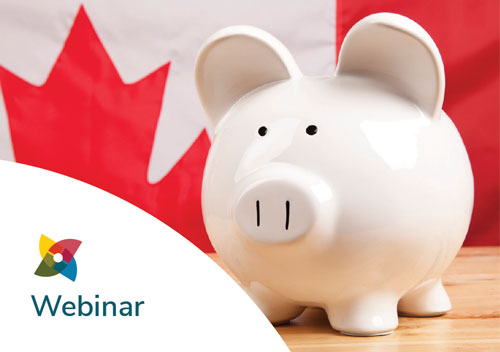As an employer, it might seem that employees should plan their own retirement. But nowadays, employees expect company support in retirement planning. Employees view your company as a trusted source of information for financial management. Don't disappoint them. Below are 5 tips to help guide your employees toward retirement savings options and a happy retirement.
1. Encourage your staff to save up and invest
Encourage saving money as a key financial habit. One easy way to do this is by offering payroll deduction savings programs. Help your people to establish an emergency fund to avoid going into debt in times of crisis. Offer them useful tools to manage finances.
Show your younger staff how saving money early, especially for retirement, means that only a small amount needs to be set aside to reach their goals due to compound interest. Interest earned on their original money plus interest that keeps accumulating will allow their money value to grow exponentially over time. Here is a free calculator resource to help them determine their return.
2. Keep your team up to date about government benefits
The government provides various benefits to retirees. It’s important for employees to understand how government retirement benefits can impact their expected income. Depending on a number of factors, these benefits can generate an average income of $17,400 in 2024 for individuals retiring at age 65. Due to changes made several years ago, these benefits are even more generous for those who retire in the future.
The Canadian retirement income system consists of 3 pillars: CPP, OAS and employer-sponsored pension plans / personal savings and investments.
Canada Pension Plan (CPP)
Canada Pension Plan provides monthly payments to those who contributed to it during their working years. To qualify, they must be no less than 60 years old and have made at least one valid contribution. They can choose to take CPP as early as age 60 or as late as age 70. The earlier they take it, the lower their monthly payments will be.
Old Age Security (OAS)
Old age security is available after the age of 65. It is one of the few governmental benefits that is fully taxable. Retirees may be automatically enrolled in OAS depending on certain conditions but usually need to apply. The amount that is paid is based on how long they have lived in Canada or certain countries after the age of 18. It is also possible to defer receiving OAS to age 70 and receive a higher monthly payment.
3. Educate your employees about creating several streams of retirement income
The more income streams they can build in retirement, the easier it will be to meet their financial goals when retirement comes around. Encourage employees to save up in a variety of ways to achieve a balance of financial goals throughout retirement and to optimize their tax situation. Always keep your employees informed about current tax updates. It’s essential to balance registered resources such as pensions and RRSPs with government benefits, Tax-Free Savings Accounts (TFSA), and investments.

4. Remind them to take advantage of employer contributions
If you offer a company-sponsored retirement or savings plan with matching contributions, encourage your employees to take advantage of it. This can be done through education, automatic enrollment, or making the plan mandatory. The employer contribution will increase the employee's savings and quickly boost their retirement fund. Furthermore, depending on the plan, the organization's matching deposits will grow tax-free, helping the employee to save up faster.
5. Help them to invest in their goals, not the current market conditions
What are your employees' personal goals? Do they want to buy that dream house, travel the world, or retire early? Investing in their specific goals, instead of solely reacting to current market conditions, is crucial. Help your employees to understand the basics of financial planning vs. investing.
Risk is tied to time and it is important to set aside funds for short, medium, and long-term goals, choosing the savings or investment types that are most appropriate for each timeline. Strategies take the emotion out of investing. When the market is volatile and interest rates are rising, investors who stay the course and wait it out achieve long-term success.

Wrapping Up
As an employer, you must stress to your people how important it is to save for retirement. It is the one goal we all have in common. At some point, we must stop working, whether it is planned or unplanned.
At all stages of your employees’ careers, you are in a position to help them avoid mistakes and achieve financial freedom. Retirement is a significant transition. As an employer, you can provide education and resources at all stages to ensure financial security.









